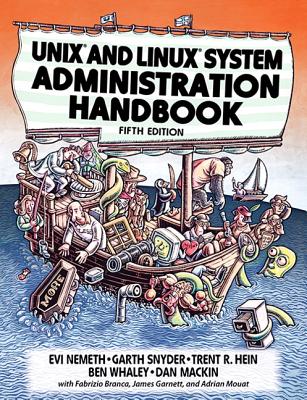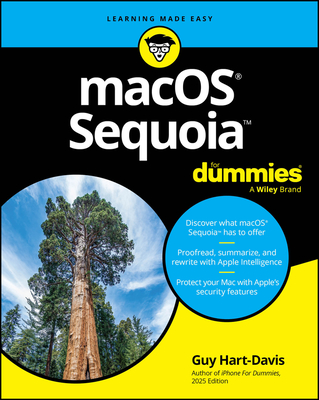Linux Unix Training Classes
Learn Linux Unix wherever you are located. All of our classes either are offered on an onsite, online or public instructor led basis.
Upcoming Instructor Led Online and Public Linux Unix Training Classes
View all Scheduled Linux Unix Training Classes
Linux Unix Training Catalog
subcategories
cost: $ 1390length: 4 day(s)
In-depth training for software developers on Linux and UNIX system
programming facilities. Learn how to develop sophisticated multiprocess
applications using system calls and library routines. ...
cost: $ 1390length: 4 day(s)
In this course, students develop more advanced skills in using UNIX
tools. Users increase their productivity in UNIX by learning how to
create powerful korn shell scripts for processing text, managing files,
and performing other complex tasks. ...
cost: $ 1990length: 3 day(s)
The audience for this course is system's administrators desiring to automate provisioning, configuration management, service deployment, operational processes. This course covers all the core Ansible features including: installing and configuring, running ad-hoc commands, understanding modules, creating and using playbooks, variables and inclusion, task control, templates, and roles. The course ...
cost: $ 2090length: 5 day(s)
This course is designed for IT professionals whose primary job responsibility is the management of servers and other devices running the Linux operating system. A typical student in this course should have at least nine months of ...
cost: $ 2800length: 4 day(s)
This course is designed to help experienced developers get up to speed
quickly on how to develop applications for a Linux environment. In this
course you will learn: The tools and methods for developing C programs
and doing systems programming under Linux. Debugging techniques and
process management. Linux specific paid and system calls. And more. ...
cost: $ 2800length: 4 day(s)
Upon mastering this material, you will be familiar with the different
kinds of device drivers used under Linux, and have an introduction to
many of the appropriate APIs to be used when writing a device driver.
The labs for illustrating these concepts will all be performed on ARM
hardware in order to get developers familiar with cross-compiling and
developing drivers for an embedded target. The ...
cost: $ 2800length: 4 day(s)
This course will teach you how to develop device drivers for Linux
systems, grounded with a basic familiarity and understanding of the
underlying Linux kernel. You will learn: The different kinds of device
drivers used in Linux ... The appropriate APIs through which devices
(both hardware and software) interface with the kernel. ... Necessary
modules and techniques for developing and debugging ...
cost: $ 2490length: 5 day(s)
Participants will first understand the core features of Docker including: container creation and management, interacting with Docker hub, using Dockerfile to create and manage custom images, advanced Docker networking (how to safely expose container services to the world, and link containers), the use of Docker volumes to manage persistent data, and Docker Compose to build multi-container ...
cost: $ 3250length: 4 day(s)
This course will teach you how to take advantage of the Yocto Project -
the open source collaboration effort that provides templates, tools and
methods to help you create and maintain custom Linux-based systems for
embedded products regardless of the specific hardware architecture.
You'll learn: How to use the Poky and Bitbake build
process, with its recipes and layers to customize Linux kernel ...
cost: $ 2090length: 5 day(s)
This 5 day expansive course covers a wide range of network services
useful to every organization. Special attention is paid to the concepts
needed to implement these services securely, and to the trouble -
shooting skills which will be necessary for real - world administration
of these network services. The course material is designed to provide
extensive hands - on experience. Topics ...
cost: $ 2090length: 5 day(s)
This highly technical course focuses on properly securing machines
running the Linux operating systems. A broad range of general security
techniques such as packet filtering, password policies, and file
integrity checking are covered. Advanced security tec hnologies such as
Kerberos and SELinux are taught. Special attention is given to securing
commonly deployed network services. At the end ...
cost: $ 2290length: 4 day(s)
Hardening of a RHEL Linux System.
...
cost: $ 2190length: 5 day(s)
Enterprise Linux Systems Administration is an in-depth course that explores installation, configuration and maintenance of Linux systems. The course focuses on issues universal to every workstation and server. The course material is designed to provide extensive hands-on experience. Topics include: installation and configuration; the boot process; user and group administration; filesystem ...
cost: $ 1690length: 4 day(s)
This course provides a comprehensive introduction to the full range of
UNIX user commands and utilities. Students will develop shell
programming and vi editing skills. ...
cost: $ 1890length: 3 day(s)
This course covers the essentials of deploying and managing an Apacheâ?¢ Hadoop cluster. The course is lab intensive with each participant creating their own Hadoop cluster using either the CDH (Cloudera's Distribution, including Apache Hadoop) or Hortonworks Data Platform stacks. Core Hadoop services are explored in depth with emphasis on troubleshooting and recovering from common cluster ...
cost: $ 2200length: 4 day(s)
This course will teach you how to ensure that your servers stand up
under even the most intense pressure. Developed for some of the largest
Linux deployments in the world, this course will teach you: How to
create and maintain systems that allow for highly-available
applications. The concepts and best practices used to meet security and
high availability requirements using the latest hardware ...
cost: $ 1890length: 4 day(s)
This four-day course provides the student with the knowledge to interact with a UNIX operating system. Students will develop their UNIX skills with hands-on experience on Sun's Solaris OS, the most popular UNIX operating system in the world.
...
cost: $ 1290length: 3 day(s)
Kubernetes is an open-source system for automating deployment, scaling, and management of containerized applications.
This course introduces participants to the basic concepts and architecture of Kubernetes, its initial install & setup, Kubernetes Pods, Deployments and Services, Persistent Storage, Networking, Automating Deployment, Scaling & Management Of Containerized Applications, the ...
cost: $ 1890length: 4 day(s)
This Kubernetes Administration course covers the topics of the CKA (Certified Kubernetes Administrator) exam.
Topics covered include installation, application lifecycle managment, networking, storage, security, scheduling, logging, maintenance, and troubleshooting of Kubernetes. ...
cost: $ 2490length: 4 day(s)
Kubernetes is an open-source system for automating deployment, scaling, and management of containerized applications.
This course introduces participants to the basic concepts and architecture of Kubernetes, its initial install & setup, Kubernetes Pods, Deployments and Services, Persistent Storage, Networking, Automating Deployment, Scaling & Management Of Containerized Applications, the ...
cost: $ 1290length: 3 day(s)
This Linux systems administration course focuses on command line tools. ...
cost: $ 790length: 2 day(s)
This 2 - day course is an introduction to writing Linux shell scripts.
Topics include the use of pipes and filters, shell variables, start - up
scripts, looping and decision constructs, and script exit status. Hands
- on exercises include writing scripts to schedule recurring tasks,
automate system maintenance, create archives and backups, connect to
remote machines, and send and retrieve files ...
cost: $ 2090length: 5 day(s)
A fast paced 5-day course that is a combination of "Enterprise
Linux Systems Administration", and "Enterprise Linux
Networking Services. Particular focus is given to translating
Solaris and HP-UX skills to Linux. ...
cost: $ 1090length: 3 day(s)
This 3-day course focuses on the basics of the vendor-neutral Linux
Operating System. Topics include Linux evolution, graphical
environments, terminal interfaces, the bash shell, Linux file system,
file manipulation commands, and process management. The course is
supplemented with many hands-on exercises that reinforce the lectures. ...
cost: $ 2090length: 5 day(s)
The GL120 is a challenging course that focuses on the fundamental tools and concepts of Linux and Unix. Students gain proficiency using the command line. Beginners develop a solid foundation in Unix, while advanced users discover patterns and fill in gaps in their knowledge. Like all Guru Labs courses, the course material is designed to provide extensive hands-on experience. Topics include: basic ...
cost: $ 2800length: 4 day(s)
This course provides experienced programmers with a solid understanding
of Linux kernel. debugging techniques and tools. This four day course
includes extensive hands-on exercises and demonstrations designed to
give you the necessary tools to develop and debug Linux kernel code. ...
cost: $ 2400length: 5 day(s)
This 5-day course will provide a fundamental knowle dge of the internals
of the Linux kernel. The focus is on understanding the workings of the
kernel, and not the theory. The c ourse is valuable to any system
administrator who seeks to have a greater understanding of the Linux ke
rnel. The course is based on Linux kernel 2.6.32 as modified for
RHEL/CentOS version 6.3. For demons trations, the ...
cost: $ 1690length: 5 day(s)
This five-day course provides the student with the knowledge to use
Linux both as an end user and as an entry-level system administrator.
Students will learn the basic command line utilities to navigate the
file system and manipulate files, including use of the vi editor and
file permissions. The course includes an overview of the available Linux
GUI front ends, and specifically looks at the ...
cost: $ 1690length: 5 day(s)
This five-day course provides the student with the knowledge to perform
system administrator tasks relating to the administration of
filesystems, including set uid bit for permissions, partition
management, mounting and unmounting, disk diagnostics, RAID, LVM and NFS
disk types, and disk quotas. The course finishes with administration of
hardware devices, basic networking, including TCP/IP, and ...
cost: $ 2090length: 5 day(s)
This five-day course provides students with the knowledge to perform
system administration tasks relating to kernel management and system
security. These topics include the proc filesystem configuration, kernel
rebuilds and backups as well as log file maintenance. The course moves
into security issues including physical security of the host and
console, user and system accounts, network and ...
cost: $ 1690length: 5 day(s)
This five-day course helps the experienced Linux administrator develop advanced skills in configuring and managing a secure Linux network server. Students learn how to use the RPM system to create their own RPMs both for packaging your own software for standardized distribution, and for rebuilding existing packages from source RPMs. They will gain hands-on experience configuring and running ...
cost: $ 2490length: 4 day(s)
This class meets the needs of advanced Linux Systems Administrators expanding their knowledge of core workings of Linux. Theories and methodologies are covered for tuning, monitoring performance, and analyzing the performance of the Linux operating system. ...
cost: $ 990length: 2 day(s)
Designed to provide the skills necessary to automate tasks on a Unix or Linux system. Systems Administrators and Developers alike can avoid errors, save time and money by replacing repetitive work patterns with shell scripts. Care has been taken to present in a format that benefits all students, with or without previous programming experience. Guru Labs believes that the best way to learn shell ...
cost: $ 2290length: 5 day(s)
The GL314 is designed to give Linux administrators experience with both common and uncommon system problems. The course is based on the idea that the best way to learn troubleshooting is to perform troubleshooting. Approximately 25% of class time is spent on lecture, leaving 75% for intensive lab content. Class starts with a discussion of effective troubleshooting technique. Tools and topics are ...
cost: $ 2090length: 5 day(s)
This course helps you prepare for the CompTIA Linux+ Certification exam.
The course teaches Linux user commands, shell script programming, and
essential Linux system administration tasks. Note that completion of
this course alone is not adequate preparation to pass the exam. The
actual Linux+ Certification is designed to measure the competencies of
Linux professionals who have six to twelve ...
cost: $ 1890length: 4 day(s)
This course prepares students to take the 101 exam of the LPI level 1 certification. The Linux Professional Institute (LPI) is the go to certification body for vendor independent Linux certifications. This course covers fundamental Linux skills such as file management and manipulation, text processing, command line use, package management, filesystems, hardware, and many more. Students will feel ...
cost: $ 1890length: 4 day(s)
This course prepares students to take the LPI 201 exam of the LPIC-2 certification. The Linux Professional Institute (LPI) is the go-to certification body for vendor independent Linux certifications. This course covers more advanced Linux skills such as system management and networking. Students will feel confident taking the LPI LPIC-2 201 exam with in classroom assessments and practice exams. ...
cost: $ 1890length: 4 day(s)
This course prepares students to take the LPI 202 exam of the LPIC-2 certification. The Linux Professional Institute (LPI) is the go-to certification body for vendor independent Linux certifications. This course covers more advanced Linux skills such as system management and networking. Students will feel confident taking the LPI LPIC-2 202 exam with in classroom assessments and practice exams. ...
cost: $ 2400length: 4 day(s)
Open Source Virtualization takes a deep dive into KVM (Kernel-based
Virtual Machine) and Xen, the most popular hypervisor virtualization
technologies in the open source ecosystem, as well as the deployment and
use of containers. Built by experts in the field of virtualization, this
course provides the technical background to understand the components
required to build and administer a modern ...
cost: $ 2090length: 3 day(s)
This hands-on course with lab exercises will help learners to install and manage an OpenShift cluster. Throughout the course learners will understand the benefits and purposes of the platform. This includes how to install the cluster, explore networking concepts, understand commands, manage OpenShift resources, configure storage, manage application deployments, and administer the cluster ...
cost: $ 2090length: 3 day(s)
This course covers the core knowledge of OpenShift fundaments. The topics covered include containers, orchestration, storage, networking, and application deployment.
...
cost: $ 1890length: 4 day(s)
This course is targeted to OpenStack DevOps professionals, systems administrators, and developers who want to understand the deployment, structure, and operation of OpenStack more deeply. This training builds on builds on the basic OpenStack system administration skills gained on the OST104 course and enhances participants knowledge with more in-depth information and hands-on exercises in the ...
cost: $ 1790length: 4 day(s)
This course covers the fundamentals of the OpenStack open source IAAS (Infrastructure As A Service) cloud solution, used for creating private clouds. After a short cloud and OpenStack primer, students will learn the architecture of OpenStack. This course introduces base components in detail such as the Horizon GUI dashboard and the OpenStack CLI. Other components learned are the Keystone identity ...
cost: $ 2090length: 5 day(s)
This course covers the general administration and step-by-step installation of the OpenStack open source IAAS (Infrastructure As A Service) cloud solution, widely used for creating private clouds. After a short cloud and OpenStack primer, this course presents the architecture of OpenStack and introduces its base components and administration in detail. Components covered are the Horizon GUI ...
cost: $ 2735length: 4 day(s)
The audience for this course is system's administrators desiring to automate provisioning, configuration management, service deployment, operational processes. This course covers all the core Ansible features including: installing and configuring, running ad-h ...
cost: $ 1290length: 3 day(s)
This class teaches core Red Hat Enterprise Linux administration skills targeted for Solaris Administrators. Solaris Administrators will be able to leverage their administration experience to quickly get up to speed with Red Hat Enterprise Linux. Version: ...
cost: $ 2090length: 5 day(s)
This course is designed to follow an identical set of topics as the Red Hat�® RH124 course with the added benefit of very comprehensive lab exercises and detailed lecture material.
The Red Hat Enterprise Linux (RHEL) system administration topics covered in this course along with the GL134 course cover the certification objects of the Red Hat Certified System Administrator (RHCSA) exam.
...
cost: $ 1890length: 4 day(s)
This GL134 course is designed to follow an identical set of topics as the Red Hat® RH134 course with the added benefit of very comprehensive lab exercises and detailed lecture material.
The Red Hat Enterprise Linux (RHEL) system administration topics covered in this course along with the GL124 course cover the certification objects of the Red Hat Certified System Administrator (RHCSA) exam.
...
cost: $ 1890length: 4 day(s)
This course is designed to follow an identical set of topics as the Red Hat RH254, RH255 RHCE exam prep courses with the added benefit of very comprehensive lab exercises and detailed lecture material.
The Red Hat Enterprise Linux (RHEL) system administration topics covered in this course along with the RHCSA Exam Prep course cover the certification objects of the Red Hat Certified Engineer (RH ...
cost: $ 1690length: 3 day(s)
This is a differences course that focuses on the new technologies and features that made their appearance in Red Hat Enterprise Linux v7. It is intended for system administrators and developers who are comfortable with RHEL6 and wish to update their skills on the new topics.
The notable new features covered in this course include the new system and service manager Systemd, the GRUB2 boot ...
cost: $ 2590length: 4 day(s)
This 4-day course provides comprehensive hands on coverage all the of the major features starting from best practices in installation and initial configuration, managing subscriptions, products and repositories, content views, lifecycles, activation keys, system registration of existing system, bare metal and virtualization provisioning including discovery, provisioning templates, configuration ...
cost: $ 2590length: 4 day(s)
Red Hat Enterprise Linux 7
...
cost: $ 2090length: 5 day(s)
This course is carefully designed to match the topics found in the Red Hat® RH299 exam prep course but also features the added benefit of an entire extra day of comprehensive lab exercises and detailed lecture material.
Students learn the Red Hat Enterprise Linux (RHEL) system administration skills needed to pass the Red Hat Certified Engineer (RHCE) exam. This is an accelerated course ...
cost: $ 2090length: 5 day(s)
Students seeking training to prepare themselves for the RHCSA certification should attend this course. This course is taught in a rapid pace format designed to help quickly identify and fill gaps in system administration knowledge. Focus includes managing users and groups, software, printers, and local storage. It also includes an introduction to security, virtualization, and the deployment of ...
cost: $ 2590length: 3 day(s)
This advanced security course takes a deep dive into the complexities and nuances of SELinux. The course discusses security threats posed to today’s computing resources and mitigating them through network and host protections. Students will review SELinux technology through understanding SELinux’s goals, how it has evolved including its features and limitations.
...
cost: $ 1690length: 5 day(s)
This five-day course focuses on providing students the skills and
knowledge to perform system administration tasks. ...
cost: $ 1690length: 5 day(s)
This five-day course focuses on providing students the skills and
knowledge to perform advanced UNIX administration tasks. ...
cost: $ 1690length: 5 day(s)
This five-day course enhances system administrator's abilities to
develop practical security measures on their Solaris machines. Students
will be provided with hands-on experience in addition to valuable
security knowledge. ...
cost: $ 1390length: 4 day(s)
Learn and practice essential administration tasks. Generic system
administration concepts are covered and related to specific vendors'
systems. ...
DevOps Classes
cost: $ 1690length: 3 day(s)
Linux containers are changing the way companies think about service development and deployment. Containers play a vital role in the modern data-center, and Docker is leading the way. This course covers all the core features of Docker including: container creation and management, interacting with Docker hub, using Dockerfile to create and manage custom images, advanced Docker networking (how to ...
cost: $ 2590length: 4 day(s)
An in-depth course that focuses on two key areas, Linux high availability (HA) clustering and HA storage administration. Storage is integral to many HA clusters so as to make use of clustered storage technologies to enable active/active configurations.
Over the course of many in-depth lab exercises, each student will assemble a realistic three-node Linux cluster utilizing best practices. Each ...
cost: $ 1690length: 3 day(s)
This class is an advanced Linux storage course that covers the administration of the popular GlusterFS distributed filesystem. Storage administrators and advanced Linux administrators will learn GlusterFS for a highly available, reliable software-defined storage system on commodity hardware. This course covers installation, brick management, volume management, Geo-Replication, advanced ...
Foundations of Web Design & Web Authoring Classes
cost: $ 1290length: 3 day(s)
This Tomcat Administration for Linux class covers the important topics of administering the Tomcat server including installation, directory structure, configuration using server.xml, web application deployment, the manager tool, JNDI data sources, logging, and monitoring and management of the server.
Note: This course is appropriate for users of all versions of Tomcat, including Tomcat 6.0, 7.0 ...
cost: $ 790length: 2 day(s)
Covers the details of installing and configuring the most popular Web
server on the planet: Apache's httpd server. Students will learn the
details of the httpd.conf configuration file, using .htaccess files,
virtual hosts, MIME and file types, URL mapping, directory indexing,
performance tuning, handlers, filters, server-side includes, managing
scripts, security and Apache modules. ...
cost: $ 1190length: 3 day(s)
This is a three-day course that provides an overview of Apache Web
Server. It is designed to be instructor-led while facilitated at a pace
that is comfortable for the group, using a classroom-delivery learning
model with structured and unstructured hands-on activities.This course
addresses the evolution of Apache Web Server technology and market
dominance, as well as how to build, install, ...
Java Programming Classes
cost: $ 1390length: 3 day(s)
This Tomcat Administration for Linux course provides a comprehensive overview of the essential aspects of administering Tomcat on Linux systems. The course covers the history of Tomcat, its components, and the Java Enterprise Edition (JEE) technologies it supports. Students will learn how to install and configure Tomcat, manage web applications, and understand the directory structure. The course ...
cost: $ 1390length: 3 day(s)
This Tomcat Administration for Windows course provides a comprehensive understanding of Tomcat's key components and features. Students will learn about Tomcat's history, components, and JEE overview. The course covers essential topics such as installing Tomcat, understanding the directory structure, and configuring the server. Additionally, students will gain practical knowledge on ...
Course Directory [training on all levels]
Technical Training Courses
Software engineer/architect, System Admin ... Welcome!
- .NET Classes
- Agile/Scrum Classes
- AI Classes
- Ajax Classes
- Android and iPhone Programming Classes
- Blaze Advisor Classes
- C Programming Classes
- C# Programming Classes
- C++ Programming Classes
- Cisco Classes
- Cloud Classes
- CompTIA Classes
- Crystal Reports Classes
- Design Patterns Classes
- DevOps Classes
- Foundations of Web Design & Web Authoring Classes
- Git, Jira, Wicket, Gradle, Tableau Classes
- IBM Classes
- Java Programming Classes
- JBoss Administration Classes
- JUnit, TDD, CPTC, Web Penetration Classes
- Linux Unix Classes
- Machine Learning Classes
- Microsoft Classes
- Microsoft Development Classes
- Microsoft SQL Server Classes
- Microsoft Team Foundation Server Classes
- Microsoft Windows Server Classes
- Oracle, MySQL, Cassandra, Hadoop Database Classes
- Perl Programming Classes
- Python Programming Classes
- Ruby Programming Classes
- Security Classes
- SharePoint Classes
- SOA Classes
- Tcl, Awk, Bash, Shell Classes
- UML Classes
- VMWare Classes
- Web Development Classes
- Web Services Classes
- Weblogic Administration Classes
- XML Classes
Business Training Courses
Project Managers, Business Analysts, Paralegals ... Welcome!
Upcoming Classes
Gain insight and ideas from students with different perspectives and experiences.
- Python for Scientists
4 August, 2025 - 8 August, 2025 - RED HAT ENTERPRISE LINUX SYSTEMS ADMIN I
3 November, 2025 - 7 November, 2025 - RED HAT ENTERPRISE LINUX AUTOMATION WITH ANSIBLE
15 September, 2025 - 18 September, 2025 - OpenShift Fundamentals
6 October, 2025 - 8 October, 2025 - Object-Oriented Programming in C# Rev. 6.1
15 September, 2025 - 19 September, 2025 - See our complete public course listing
training details locations, tags and why hsg
the hartmann software group advantage
A successful career as a software developer or other IT professional requires a solid
understanding of software development processes, design patterns, enterprise application architectures,
web services, security, networking and much more. The progression from novice to expert can be a
daunting endeavor; this is especially true when traversing the learning curve without expert guidance. A
common experience is that too much time and money is wasted on a career plan or application due to misinformation.
The Hartmann Software Group understands these issues and addresses them and others during any training engagement. Although no IT educational institution can guarantee career or application development success, HSG can get you closer to your goals at a far faster rate than self paced learning and, arguably, than the competition. Here are the reasons why we are so successful at teaching:
- Learn from the experts.
- We have provided software development and other IT related training to many major corporations since 2002.
- Our educators have years of consulting and training experience; moreover, we require each trainer to have cross-discipline expertise i.e. be Java and .NET experts so that you get a broad understanding of how industry wide experts work and think.
- Discover tips and tricks about Linux Unix programming
- Get your questions answered by easy to follow, organized Linux Unix experts
- Get up to speed with vital Linux Unix programming tools
- Save on travel expenses by learning right from your desk or home office. Enroll in an online instructor led class. Nearly all of our classes are offered in this way.
- Prepare to hit the ground running for a new job or a new position
- See the big picture and have the instructor fill in the gaps
- We teach with sophisticated learning tools and provide excellent supporting course material
- Books and course material are provided in advance
- Get a book of your choice from the HSG Store as a gift from us when you register for a class
- Gain a lot of practical skills in a short amount of time
- We teach what we know…software
- We care…
page tags
what brought you to visit us
Linux Unix Training ,
Linux Unix Training Classes,
Linux Unix Training Courses,
Linux Unix Training Course,
Linux Unix Training Seminar
training locations
cities where we offer Linux Unix Training Classes















